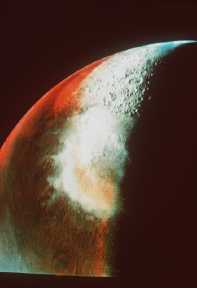This is an image of Mars.
Click on image for full size
Image from: NASA
The Cooling of Mars
Mars is small. Mars is about 1/3 the size of the Earth. This means that it cooled off very fast.
Mars probably started colder than the other earth-like planets. Then, Mars cooled rapidly from the outside, inward, like hardening candy. This caused the surface crust of Mars to rapidly thicken to the point of being immovable and prevented any further continental drift.
Much later, Mars finally warmed a little from inside. (Earth and Venus were already warm from inside!) Then a bubble of material rose from the deep interior of Mars, like the bubble in a tire, which pushed out and raised the crust, and created the Tharsis Bulge, Olympus Mons, and the other volcanoes.
You might also be interested in:
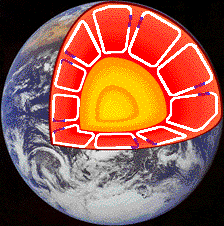
The heat of a body has the power to control activity because energy must be transported from the warmest spots to the coolest spots by whatever means is possible. The process of cooling causes activities
...more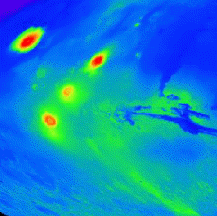
On this map of Mars, the lightly cratered Tharsis Ridge is shown, as well as the heavily cratered Martian highlands (near the bottom of the picture), and Valles Marineris to the right. The volcanoes are
...more
The largest volcano in the solar system is Olympus Mons, shown in the image to the left. Olympus Mons is a Martian shield volcano. The altitude of Olympus Mons is three times the altitude of the largest
...more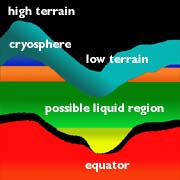
On Mars, the water is trapped, frozen, within the ground. Nevertheless, there is evidence for running water on Mars. When the water is melted and released to the surface, it will run from higher ground
...more
The drawing shows a crossection of the crust, and the unusual altitude variation of the Martian surface. The figure illustrates the depth of frozen ground at various latitudes, called the cryosphere. The
...more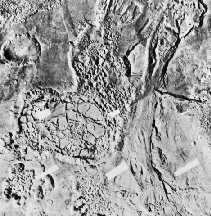
Separate from the Martian outflow channels, or the river valley networks, are large Martian lakes (600 km, or ~1000 miles across) which exhibit evidence of a periodic and catastrophic release of water
...more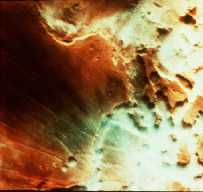
This is an image of fog in a Martian canyon. The presence of fog provides evidence of water, and a water cycle on Mars. More fog has been seen in images returned by Mars Global Surveyor of the south polar
...more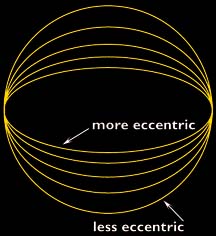
The Martian climate is more influenced by the shape of the Martian orbit than the climate of the Earth is influenced by the shape of the Earth's orbit. The orbit of Mars is more oval-shaped than that
...more


